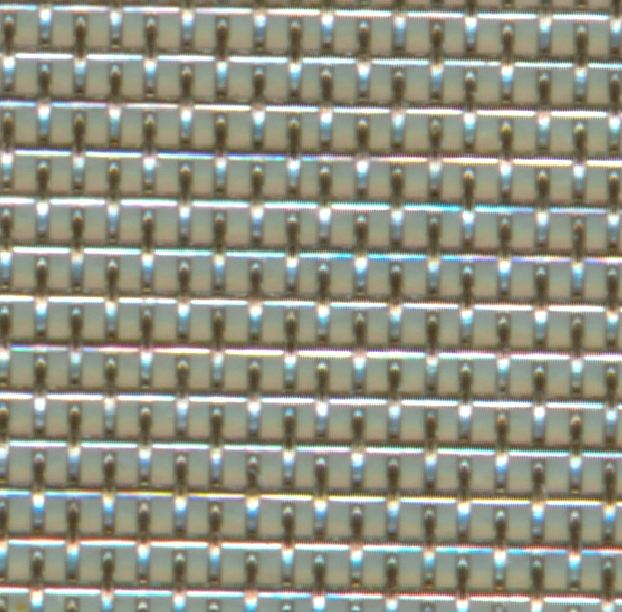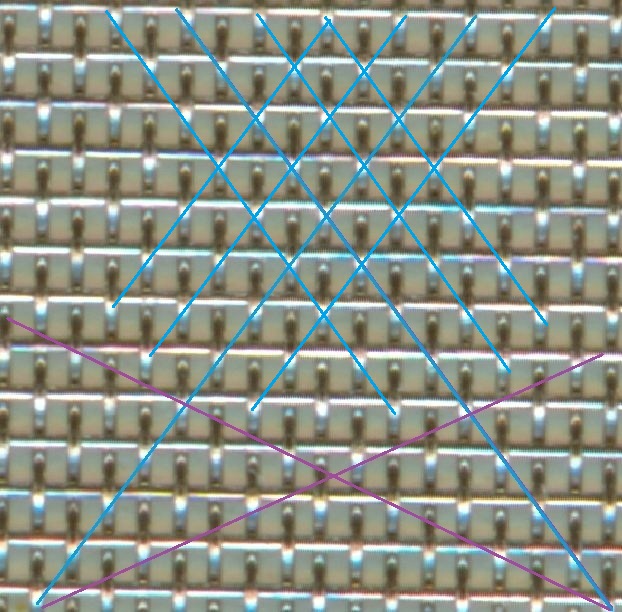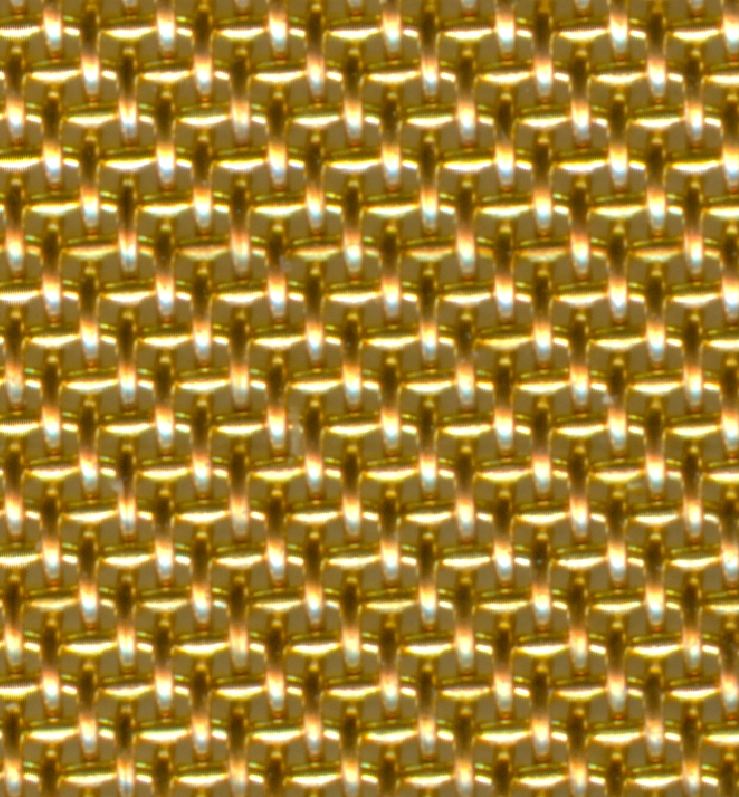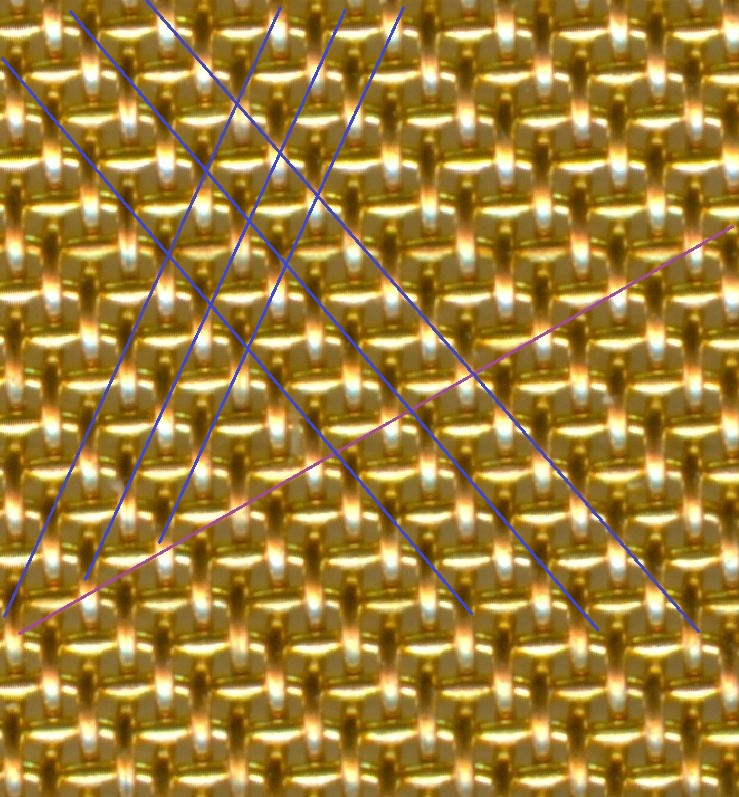I have mentioned it before, in the period before 1938 only ONE type of paper wire had been used for paper manufacturing = a symmetrical wire AKA linen-binding:

when you connect the cross-overs by a blue line you wil get this:

Around 1938 the paper industry started to use different wires with a twill-binding:

when you connect the cross-overs by a blue line you will get this:

The purples lines represent diagonals our eyes are less likely to see, but still!
In the linen-binding the diagonals are symmetrical and are equidistant - the next parallel blue line is just as far way in the case of the ascending lines as of the descending lines. In the twill-binding, however, the ascending blue lines are nearer to each other!
I hope this will make it clear why I refer to the linen-binding as symmetrical and to the twill-binding as asymmetrical. It is not just the angles of the blue lines but also the density!
Quite common was the 28/18 lines per cm horizontally/vertically! But occasionally other densities can be found although not so common. The most often met other version is the 24/22 density which is called "Tela" in Argentina and originated from the Wiggins Teape paper mill in the UK! Outside Argentina Tela can be found for UK and most British Commonwealth countries in the 1939-1950 period. Even in Australia and NEW Zealand. Apart from the Argentina collectors ONLY the NZ collectors have been aware of this type of paper!














































